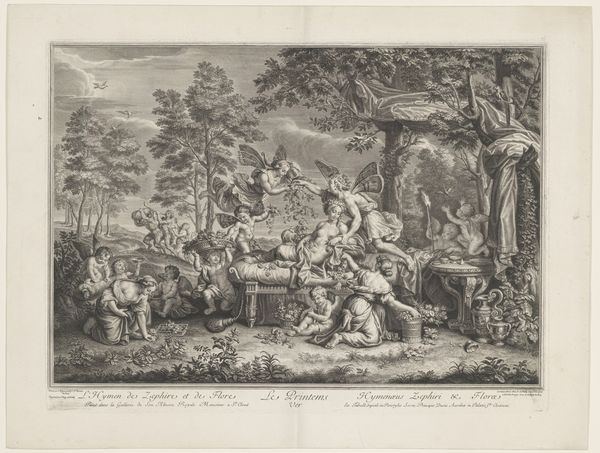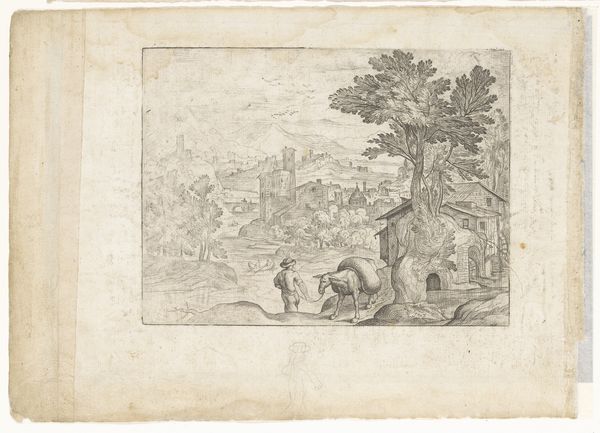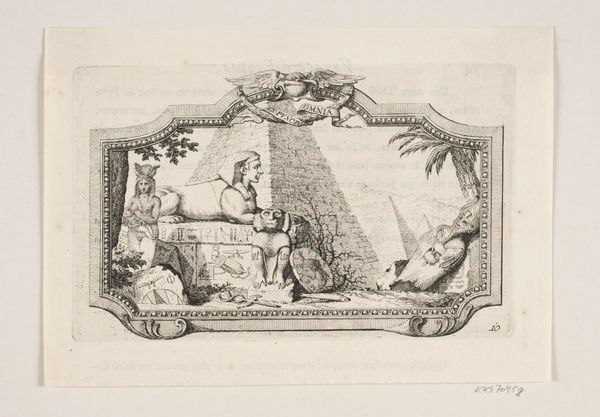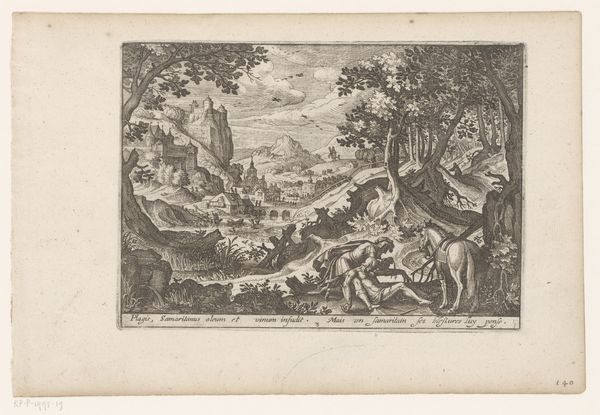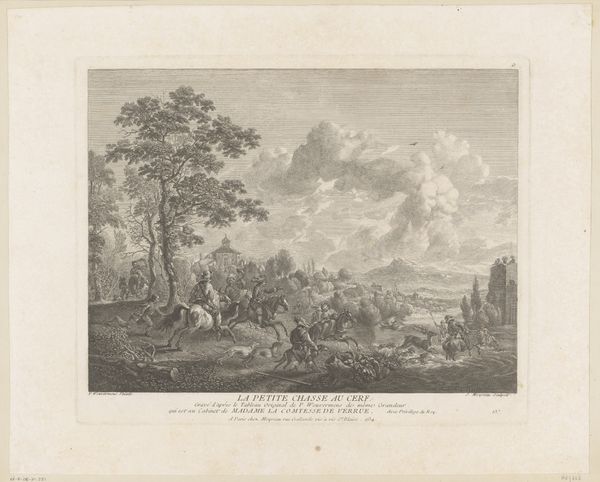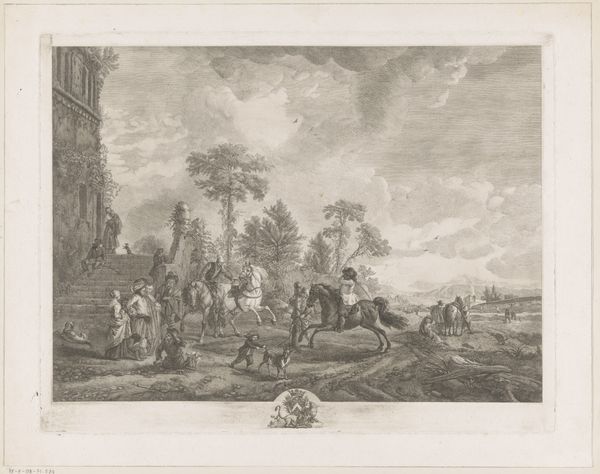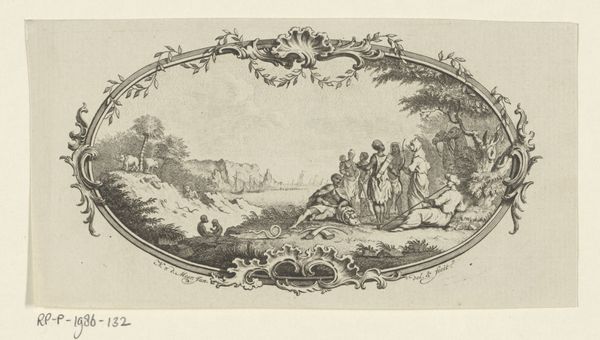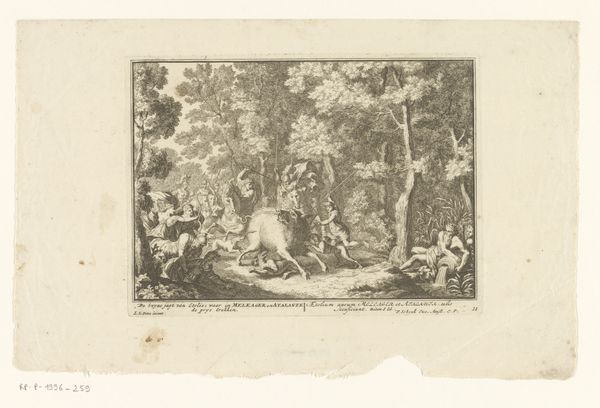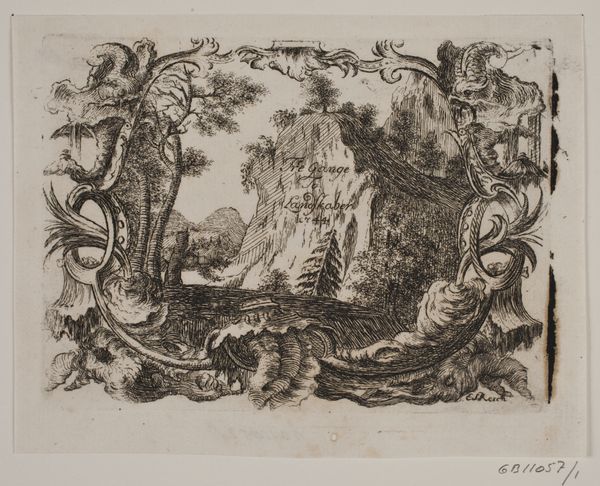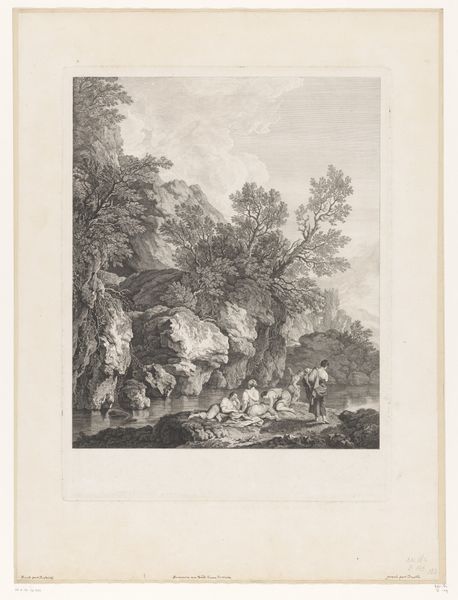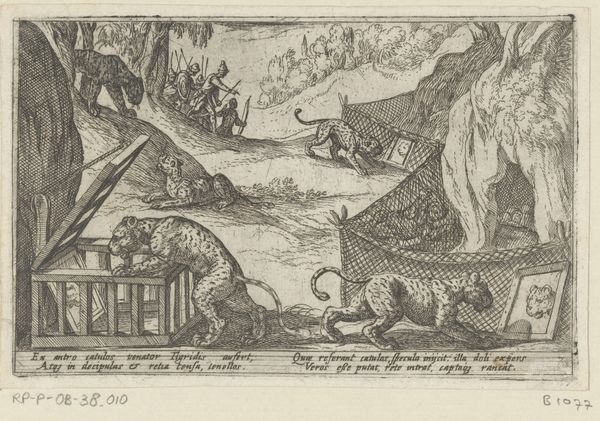
drawing, lithograph, print, ink, engraving
#
drawing
#
allegory
#
narrative-art
#
ink painting
#
lithograph
# print
#
figuration
#
ink
#
genre-painting
#
engraving
Dimensions: 551 mm (height) x 359 mm (width) (bladmaal)
Curator: Let's delve into this detailed print titled "Fredmans Epistel No. 83," dating from 1837-1874. It’s an intriguing piece currently held at the SMK, Statens Museum for Kunst. Editor: My first thought? It's quite fantastical. The engraving technique, so fine and detailed, lends itself to a kind of whimsical dreamscape. There's an interesting tension between what looks like upper-class revelry and a more earth-bound struggle evident in the materials presented. Curator: Indeed. This piece offers a narrative, almost an allegory, ripe for interpretation through the lens of social dynamics and power structures. The etching blends genre scenes with symbolic imagery. Editor: Look at the sheer number of figures, both human and allegorical! And the textures! From the draped fabrics to the rough-hewn barrels. I wonder about the labor involved in creating this illusion of leisure, especially regarding printmaking in the 19th Century? Curator: Precisely! The context of its creation is essential. Who was the target audience for such a detailed print? What commentary is being made about class, consumption, and perhaps even the artistic license afforded to different echelons of society? Editor: Notice, too, how alcohol seems central to many of the activities depicted, both in the boisterous scene on the left and the dwarfish creatures pulling barrels of booze on the right. It certainly brings forth questions about labor and the production of leisure for some, fueled perhaps by the exploitation of others? Curator: I completely agree. The artist subtly uses these dichotomies to engage with complex societal issues. It hints at broader philosophical debates and provides rich fodder for examining contemporary conversations around identity and access to power. What power structures does in reflect at this period? Editor: Considering the material production of a print like this too allows a space for analysis, and forces us to acknowledge the artist's choices around technique – and what impact those technical choices could have in reproducing a social vision? Curator: Yes, engaging with historical context while keeping present-day realities in mind allows the artwork to spark necessary discussions regarding enduring inequities. It creates room to engage meaningfully with power. Editor: Definitely. Considering all these layers, from artistic process to subject matter, reveals a much deeper engagement than initially meets the eye. This print is less about aesthetics, and more a record of complex, sometimes oppressive processes. Curator: Absolutely. It encourages a deeper look into art and its capability to reflect not only beauty but social critique, too. Editor: Right! Thank you for providing insight!
Comments
No comments
Be the first to comment and join the conversation on the ultimate creative platform.
